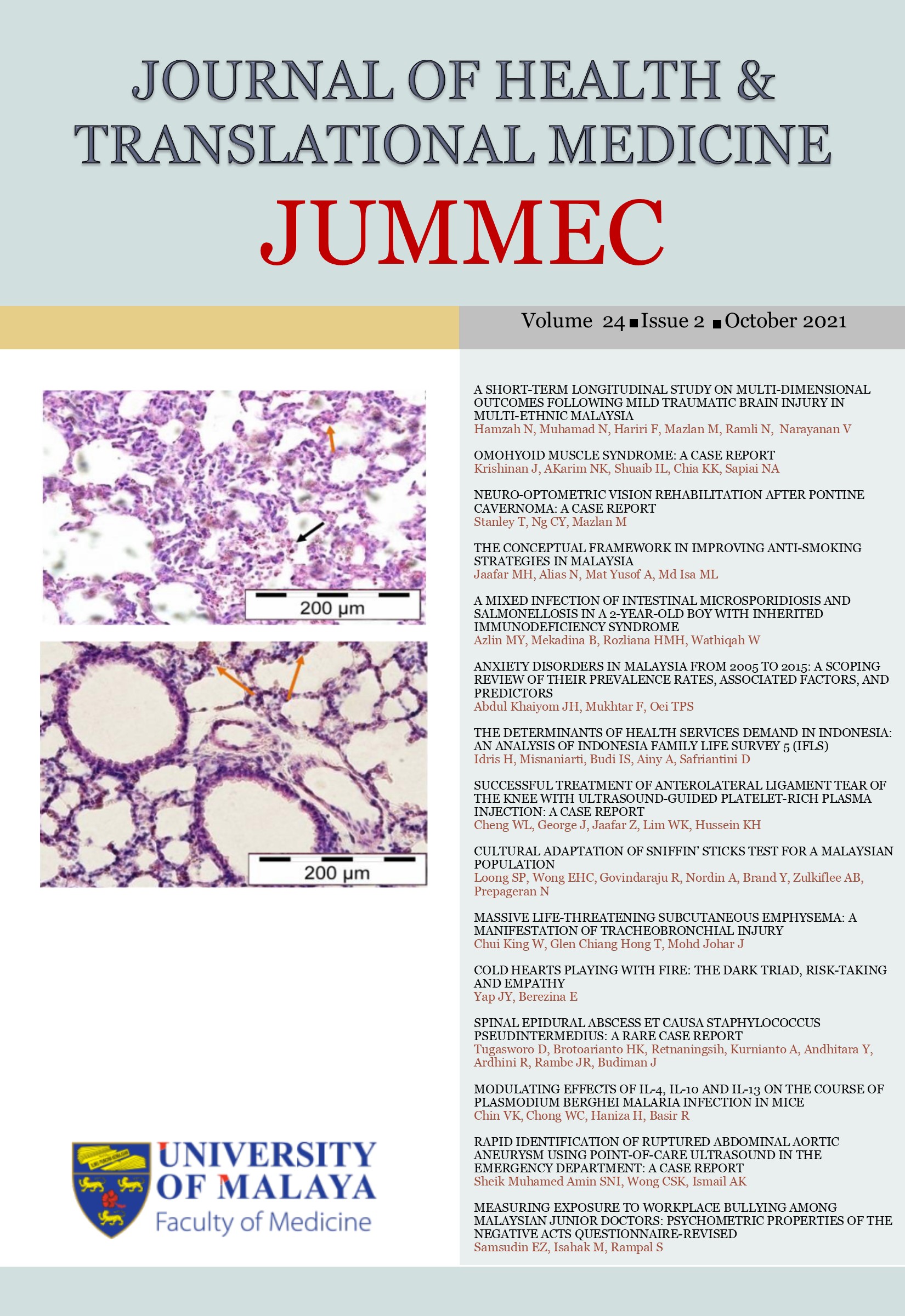THE DETERMINANTS OF HEALTH SERVICES DEMAND IN INDONESIA: AN ANALYSIS OF INDONESIA FAMILY LIFE SURVEY 5 (IFLS)
Received 2019-08-23; Accepted 2021-01-07; Published 2021-09-17
DOI:
https://doi.org/10.22452/jummec.vol24no2.7Keywords:
Demand, Health Services, Outpatient, Inpatient, Negative Binomial, ProbitAbstract
Many countries are trying to achieve Universal Health Coverage. Indonesia wanted to do this by implementing National Health Insurance in 2014. The purpose of this study is to explore the demand for health services based on visits to service providers, for both outpatient and inpatient care. This study used secondary data from wave five of the Indonesia Family Life Survey (IFLS). The sample used in this study comprised 34,177 individuals who were aged >15 years old. In this study, the demand for health services was measured based on whether respondents had visited a healthcare facility and their number of visits to healthcare facilities. Data was analysed using bivariate analysis with chi-square and multivariate analysis using the negative binomial regression model and probit model. The proportion of respondents visiting healthcare facilities for outpatient care was 16%, while for inpatient visits it was 5%. Both models produced almost the same effect in indicating the probability of individuals visiting a healthcare facility and their number of visits. Age, gender, marital status, education level, economic level, having health insurance, region, health status, chronic disease, and the number of diseases were statistically significant (P < 0.001) in influencing outpatient service demand. Age, gender, marital status, education level, economic level, having health insurance, regional status, health status, and the number of diseases were statistically significant (P < 0.001) in influencing inpatient service demand. Individual characteristics, demographics, and health status were independent factors associated with demand for healthcare services. The government should consider these factors in expanding health service demand in Indonesia.
Downloads
Downloads
Published
Issue
Section
License
All authors agree that the article, if editorially accepted for publication, shall be licensed under the Creative Commons Attribution License 4.0 to allow others to freely access, copy and use research provided the author is correctly attributed, unless otherwise stated. All articles are available online without charge or other barriers to access. However, anyone wishing to reproduce large quantities of an article (250+) should inform the publisher. Any opinion expressed in the articles are those of the authors and do not reflect that of the University of Malaya, 50603 Kuala Lumpur, Malaysia.


